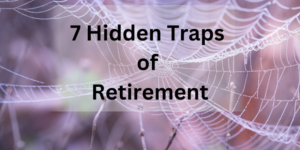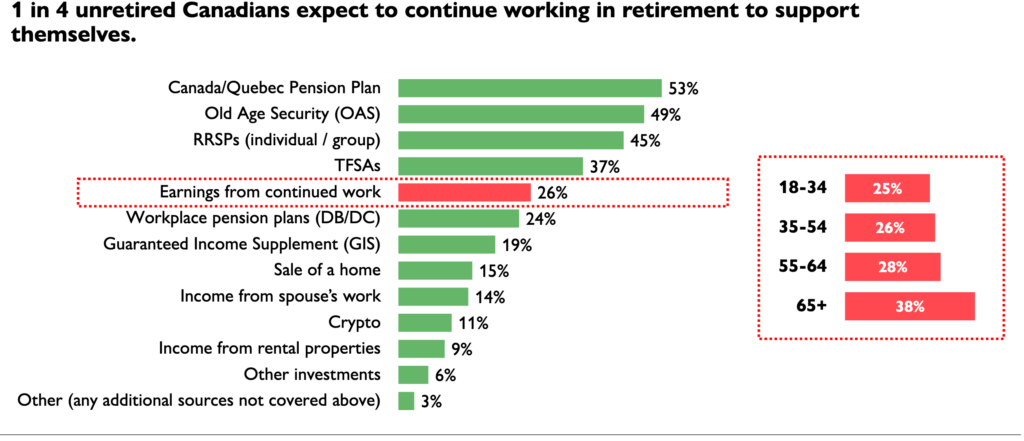 By Fritz Gilbert, TheRetirementManifesto
By Fritz Gilbert, TheRetirementManifesto
Special to Financial Independence Hub
The article was from the Harvard Business Review and highlighted 7 Hidden Traps of Retirement, which the writers discovered during interviews with “dozens of highly respected former chief executives.”
As I read the article, I realized the traps of retirement don’t apply only to folks retiring from top management positions.
These traps present a risk to all of us.
Today, I’m presenting each of the 7 Hidden Traps of Retirement and my thoughts on how best to avoid them.
Be forewarned.
Don’t get trapped.
7 Hidden Traps of Retirement
The article that made me think was The Challenges of Retiring from a High-Powered Job, written by three founders of ONYX, an invitation-only group designed to build a community for current and former CEOs. I encourage you to read the article, but I’ll summarize the key points below.
In their work helping CEOs prepare for retirement, the team has discovered seven hidden traps of retirement. While focused on senior managers, I’m taking a different twist with their list and considering how these traps apply to all of us. I’ve taken the liberty of renaming each of the seven hidden traps of retirement to better align with the readers of this blog and providing my thoughts on how to avoid falling into each.
The risks apply during our planning for and transition into retirement. If you’re struggling with the transition into retirement, perhaps it’s because you’ve fallen into one of these traps.
Original Title: Looking through the lens of the present impedes you from seeing future possibilities.
In your final years of work, it’s easy to procrastinate on retirement planning and focus on your current role. You’re busy doing your job and you can deal with that retirement stuff after you’re done working. That’s a dangerous approach that far too many people follow. It’s one of the traps of retirement for a reason. Seeing beyond your current role requires a creative imagination, the type that has likely been dormant for years. Losing your sense of identity can be a shock in retirement, but the impact can be minimized by the appropriate planning.
How to Avoid the Trap:
Forget about your current role for a minute. After all, it will be irrelevant the day after you retire. (Let that sink in)
Think about what you want your life to BECOME in retirement. You’ll no longer have that title, and that sense of identity you get from your work will be gone. That’s scary, and something a lot of people avoid thinking about. Don’t be that person. Rather, think about your new identity in retirement. What do you want to be known for? What areas are you curious about? What did you do as a child that you’d like to revisit now that you’re free from those chains of work? Carve out time to think about what impact you want to have with your newfound freedom. It takes some time, so be patient. The important thing is to think beyond your current role and imagine what you can do to make a difference once the job is gone.
In What I’ve Learned From Writing 400 Articles About Retirement, I wrote about my new identities in retirement (writer, running a charity, grandfather, etc). A quote from that article is relevant here, and I’d encourage you to adopt it as one of your goals in retirement:
“I’m not who I used to be, and I love who I’ve become.”
Original Title: A wealth of options can overwhelm and paralyze decision-making.

That busy schedule and rigid structure will disappear when you retire, and you’ll be looking at a “blank sheet of paper.” Having no schedule or structure to your day sounds appealing, but it becomes disorienting after a surprisingly short period. Your brain will start searching for something to do, and you’ll have difficulty prioritizing what you want to do with your life.
How to Avoid the Trap:
Take some quiet time to think about what impact you want to make with your retirement years. Think about the causes you have a passion for. Listen to your inner curiosity, and take that first step to see where it leads. When you’re thinking about something you could do, compare it to that list of things that matter to you. For example, you may have enjoyed working with younger people during your career and would like to find a way to do that in retirement. Perhaps you’ll become a mentor, a Big Brother, or a business coach to the next generation.
Find your “North Star” and pursue only those opportunities with strong alignment to the things that matter to you. Don’t pursue “busyness” for the sake of being busy. Rather, invest your time in areas where you have a real interest (lack of experience doesn’t matter, as I’ll demonstrate below).
Using your time to impact an area you care about is the true path to happiness.
Original Title: Relying on your old network can distract you from the critical task of building your new one.
Everybody thinks they’ll keep in touch with folks they worked with. Almost no one does. It’s one of those strange realities of retirement, and it will likely happen to you. (Note this statistic in “Shining The Light on Retirement Blind Spots”: 62% of retirees missed the relationships from work, whereas only 29% of pre-retirees expected it to be an issue).The relationships at work are about “work.” Once you’re out of the scene, it becomes difficult and awkward to maintain those relationships.
And yet, relationships matter.
I dedicated an entire chapter in my book to relationships. People think about their paycheck stopping when they retire, but they often overlook the “softer” benefits they receive from work which will also disappear:
- Structure
- Sense of Identity
- Relationships
- Sense of Purpose
- Sense of Accomplishment
Ironically, these 7 traps of retirement align almost perfectly with that list. That doesn’t surprise me in the least. If you’re a regular reader, you know I’m passionate about the importance of the “soft side” of retirement.
How to Avoid the Trap:
In your final year or two of work, be intentional about building relationships outside your workplace. Your mission: build relationships that will be there after you retire. Spend a few Saturdays volunteering at a local charity. Get involved with a few Facebook groups in your area that do things that interest you. Join a gym and learn to play pickleball. Join a local hiking club. Go to a Trout Unlimited meeting. Call an old friend. Attend a local church.
Explore whatever interests you and pay attention to the people in the groups you visit. In time, you’ll find a group that feels “right.” Pay attention, that’s where you’ll get your retirement relationships.
They matter more than you expect.
Original Title: Delaying retirement planning can lead to urgent, anxious, and awkward outcomes.

A quote from the original article is telling:
“The majority of CEOs and executives we talked with told us they failed to appropriately plan for their retirement — and nearly all told us they waited too long to start.”
It is, perhaps, the most common of the traps of retirement. Many people are nervous about retirement, and procrastination is a common response. “I’ll deal with it when I’m retired,” many people think. That’s one approach, but research has shown that taking that route will lead to a difficult transition. The cliff is coming, and you can prepare your parachute or just take the leap and figure it out once airborne. I recommend the former approach, it makes for a much smoother landing.
How to Avoid the Trap:
As I was in my final working years, I was interested obsessed with figuring out why some people had a smooth transition to retirement, whereas others struggled. As I’ve written before, there’s one single element that is the most highly correlated with the smoothness of your transition. That element?
The amount of time you spend planning for retirement in your final years of work (both on financial and non-financial issues).
Spend a lot of time planning, and your retirement will be smooth. Ignore it until you retire, and buckle in for a rough ride. As I wrote in The 4 Phases of Retirement, only 15% of retirees skip over the dreaded Phase II. I was lucky enough to be one of them. So can you. Continue Reading…










